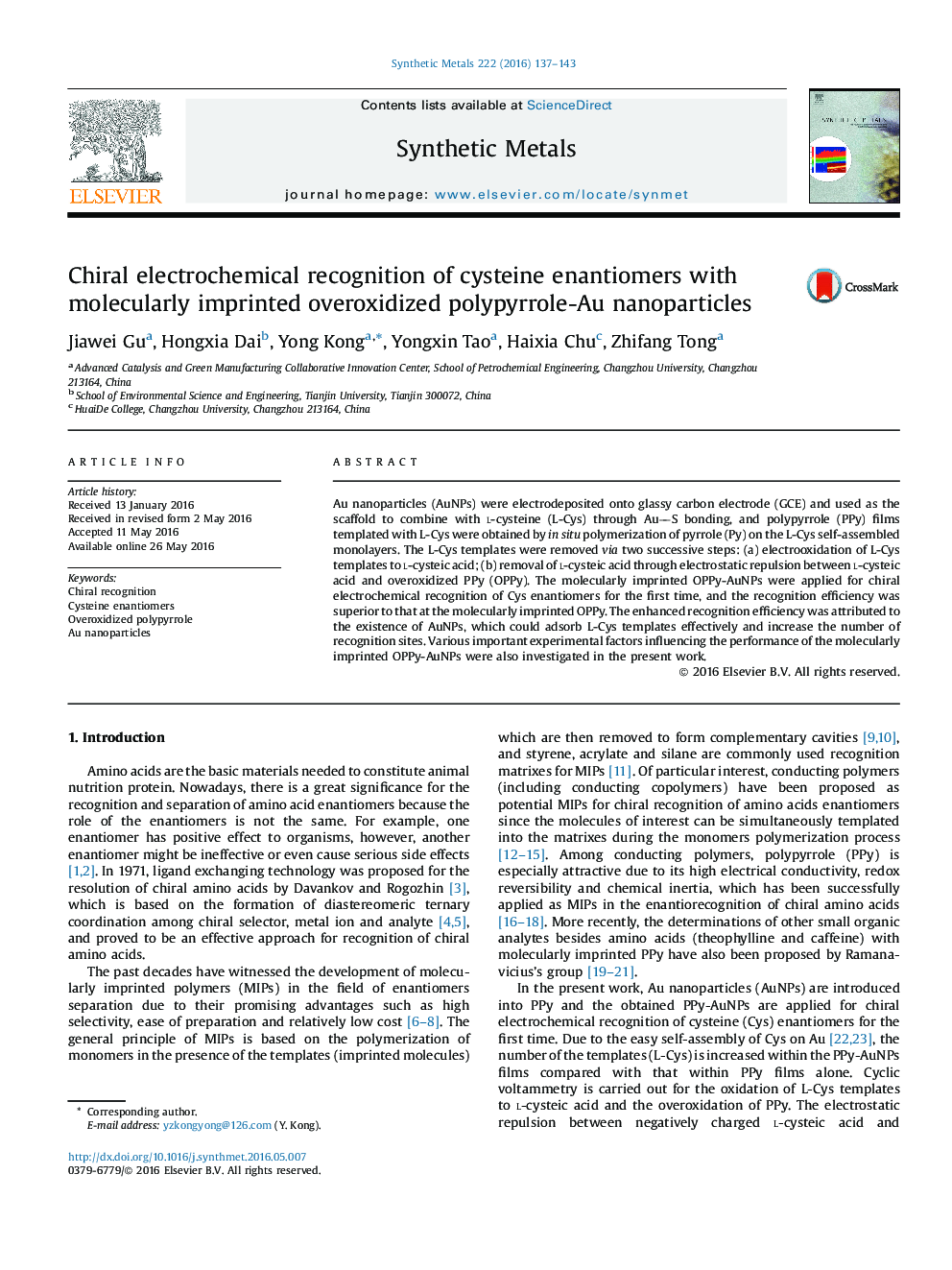| Article ID | Journal | Published Year | Pages | File Type |
|---|---|---|---|---|
| 5435622 | Synthetic Metals | 2016 | 7 Pages |
â¢AuNPs are introduced into PPy for chiral recognition of Cys enantioomers.â¢The number of templates is increased within the PPy-AuNPs films through AuS bonding.â¢Removal of L-cysteic acid from the OPPy-AuNPs is achieved by cyclic voltammetry.â¢The L-Cys imprinted OPPy-AuNPs exhibit higher affinity for L-Cys than D-Cys.â¢The recognition efficiency at imprinted OPPy-AuNPs is better than imprinted OPPy.
Au nanoparticles (AuNPs) were electrodeposited onto glassy carbon electrode (GCE) and used as the scaffold to combine with l-cysteine (L-Cys) through AuS bonding, and polypyrrole (PPy) films templated with L-Cys were obtained by in situ polymerization of pyrrole (Py) on the L-Cys self-assembled monolayers. The L-Cys templates were removed via two successive steps: (a) electrooxidation of L-Cys templates to l-cysteic acid; (b) removal of l-cysteic acid through electrostatic repulsion between l-cysteic acid and overoxidized PPy (OPPy). The molecularly imprinted OPPy-AuNPs were applied for chiral electrochemical recognition of Cys enantiomers for the first time, and the recognition efficiency was superior to that at the molecularly imprinted OPPy. The enhanced recognition efficiency was attributed to the existence of AuNPs, which could adsorb L-Cys templates effectively and increase the number of recognition sites. Various important experimental factors influencing the performance of the molecularly imprinted OPPy-AuNPs were also investigated in the present work.
Graphical abstractDownload high-res image (105KB)Download full-size image
